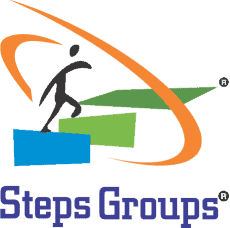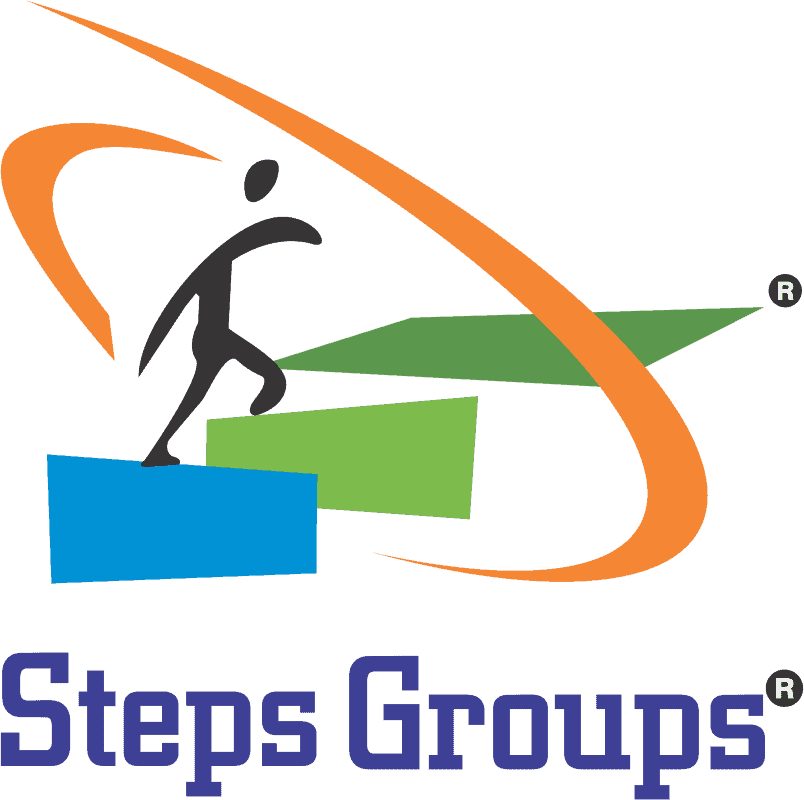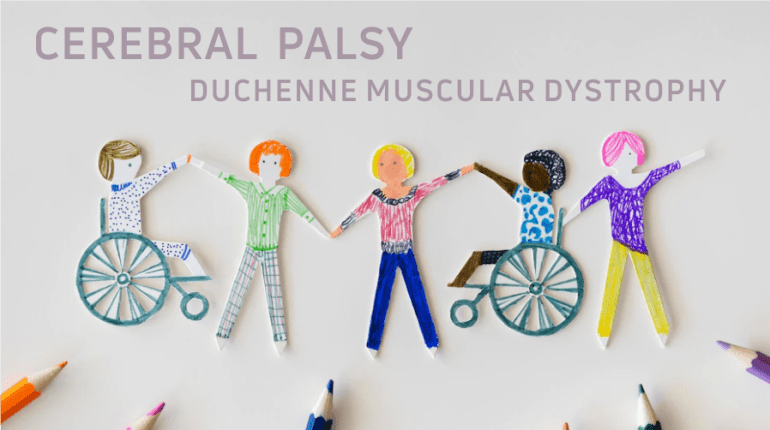Cerebral Palsy & Duchenne Muscular Dystrophy
Cerebral Palsy
Cerebral palsy (CP) is a group of disorders that affect a person’s ability to move and maintain balance and posture. CP is the most common motor disability in childhood. Cerebral means having to do with the brain. Palsy means weakness or problems with using the muscles.
- Signs and symptoms
It appears during infancy or preschool years. In general, cerebral palsy causes impaired movement associated with exaggerated reflexes, floppiness or spasticity of the limbs and trunk, unusual posture, involuntary movements, unsteady walking, or some combination of these. People with cerebral palsy can have problems swallowing and commonly have eye muscle imbalance, in which the eyes don’t focus on the same object. They also might have reduced range of motion at various joints of their bodies due to muscle stiffness.
- Causes
The cause of cerebral palsy and its effect on function vary greatly. Some people with cerebral palsy can walk; others need assistance. Some people have intellectual disabilities, but others do not. Epilepsy, blindness or deafness also might be present. Cerebral palsy is a lifelong disorder. There is no cure, but treatments can help improve function.
Benefits of Occupational Therapy for cerebral palsy
Occupational therapy is beneficial for children with cerebral palsy in many ways. By optimizing upper body function and improving the coordination of small muscles, occupational therapy can help children with CP master the basic activities of daily living. Occupational therapy can help children by: Increasing their chance for independence, improving their ability to play and learn, boosting their self-esteem and confidence, helping them develop a workable routine. Each type of cerebral palsy presents different symptoms that may hinder a child’s ability to live independently and complete daily activities.
Spastic- Muscle stiffness in the upper and/or lower limbs and jerky movements characterize spastic cerebral palsy. Among other things, this can lead to difficulty getting dressed, bathing, using the bathroom, eating, drinking, writing and holding objects.
Athetoid- Children with athetoid cerebral palsy are unable to regulate muscle tone, which makes it difficult to control their movements. Trouble with grasping objects, posture, drooling, swallowing, and speaking are common among children with athetoid CP.
Ataxic-Problems with balance and coordination are common among children with ataxic cerebral palsy. These children often struggle with precise movements and have tremors or shakiness. This makes it difficult to perform tasks like writing or eating that require precise finger movements, or repetitive movements like clapping.
Occupational therapy exercises focus on the following skill areas:
Fine Motor Control – Improves hand dexterity by working on hand muscle strength, finger isolations, in-hand manipulations, arching the palm of the hand, thumb opposition and pincer grasp. Activities include squeezing a clothespin, playing with water squirt toys and pushing coins into the slot of a piggy bank.
Bilateral Coordination – Play/movements teach the child to control both sides of the body at the same time, like drumming, pushing a rolling pin and pulling apart construction toys (Legos).
Upper Body Strength and Stability – Play focuses on strengthening and stabilizing the trunk (core), shoulder and wrist muscles through exercises, such as crawling, lying on the tummy while reading, playing catch in a kneeling position and pouring water from a pitcher into a cup.
Crossing the Midline – These activities, like making figure eights with streamers and throwing balls at a target to the right or left of center, teach the child to reach across the middle of their body with their arms and legs to the opposite side.
Visual Motor Skills – Improves hand-eye coordination through activities, like drawing, stringing beads or macaroni and catching and throwing a ball.
Visual Perception – These activities improve the ability to understand, evaluate and interpret what’s being seen. Activities include alphabet puzzles, playing with different shapes and matching games.
Self-Care – Improves the ability to perform activities of daily living and prepare the child to be more independent at home, at school and in the community. Exercises can be as simple as practicing these ADLs, like brushing their teeth, getting dressed and self-feeding.
Duchenne Muscular Dystrophy
Duchenne Muscular Dystrophy is a genetic, muscle wasting condition that only affects boys. A lack of the protein Dystrophin means the muscle fibres break down and are replaced by fibrous and or fatty tissue causing the muscle to weaken gradually.
- Common Challenges
As the condition progresses there is an increasing overall muscle weakness. Below are some of the challenges that Duchenne Muscular Dystrophy can cause: Difficulty walking long and then progressively short distances, difficulty with ascending and descending the stairs, frequent falling, fatigue affecting writing and school work, moving between items of furniture such as from bed to wheelchair or wheelchair to car, challenges with wheelchair access in the school or home environment
- Therapy for Duchenne Muscular Dystrophy
Mobility: An occupational therapist will be able to assess and advise on the most suitable wheelchairs as and when this becomes necessary.
Housing needs: Ensuring that the home environment is as accessible and inclusive as possible allows for a child’s maximum level of independence to be achieved. Our team of paediatric housing occupational therapists will provide advice on any home adaptations that are required to ensure that environmental barriers are broken down.
Equipment: As the condition progresses it is likely that there will be items of equipment that are required such as hoists and slings to ensure that movement is completed safely for all involved.
- Access to education
Young people with Duchenne Muscular Dystrophy can require support when they approach school, college or university to help ensure the environment is accessible for their needs. An occupational therapist can work with the educational establishment to ensure that any necessary alterations are mad.



